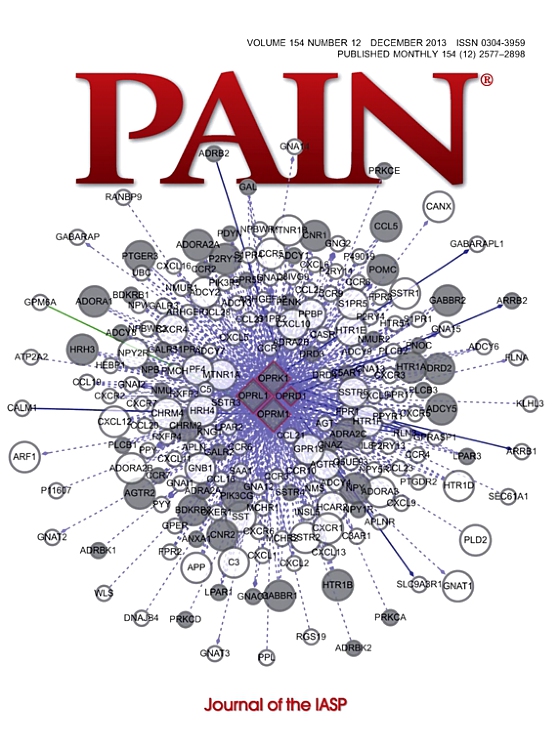中枢性脑卒中后疼痛的神经解剖学和病变网络。
IF 5.9
1区 医学
Q1 ANESTHESIOLOGY
引用次数: 0
摘要
确定与中枢性卒中后疼痛(CPSP)相关的病变部位可能有助于对早期症状进行有针对性的筛查,甚至可能为预防措施和早期治疗铺平道路。在这里,我们验证了一种假设,即从脑干延伸到大脑皮层的伤害性通路的损伤,包括白质束,与CPSP有关。我们研究了72例CPSP患者相对于卒中后无疼痛对照组的病变位置(n = 123),分为发现和独立验证数据集。该研究包括三个主要分析:(1)我们比较了有和没有CPSP组之间的病变交集与先验感兴趣区域(ROI),(2)我们进行了病变-症状映射以评估与CPSP相关的病变是否定位于先验感兴趣区域,以及(3)我们使用病变网络映射来推断与CPSP病变相关的更广泛的结构和功能连接模式。CPSP病变与伤害性通路ROI的重叠程度大于对照病变。病变症状图谱发现cpsp相关区域与腹侧丘脑和邻近白质重叠,该区域主要位于先验ROI内。病变网络图谱显示,与CPSP相关的病变破坏了伤害性通路ROI的节点和束。有趣的是,CPSP损伤网络的结果显示了与初级运动皮层的交互效应节点的连接,提供了CPSP与躯体认知行动网络之间的新联系。综上所述,这些发现表明CPSP可以被概念化为损伤相关的网络破坏,破坏了伤害感受通路和躯体认知行动网络。本文章由计算机程序翻译,如有差异,请以英文原文为准。
Neuroanatomy and lesion networks of central poststroke pain.
Identifying lesion sites associated with central poststroke pain (CPSP) may facilitate targeted screening for early symptoms, possibly even paving the way for preventive measures and earlier treatment initiation. Here, we test the hypothesis that damage to a nociceptive pathway extending from the brainstem to the cerebral cortex, and including white matter tracts, is associated with CPSP. We investigated the lesion locations of 72 patients with CPSP relative to poststroke comparison subjects without pain (n = 123), divided into a discovery and independent validation data set. The study included three main analyses: (1) we compared lesion intersection with our a priori region of interest (ROI) between groups with and without CPSP, (2) we performed lesion-symptom mapping to evaluate whether lesions associated with CPSP localize to the a priori ROI, and (3) we used lesion network mapping to infer the broader structural and functional connectivity patterns associated with CPSP lesions. CPSP lesions overlapped the nociceptive pathway ROI to a greater extent than comparison lesions. Lesion-symptom mapping identified a CPSP-associated region overlapping with the ventrocaudal thalamus and adjacent white matter, which was located mostly within the a priori ROI. Lesion network mapping demonstrated that lesions associated with CPSP disrupt nodes and tracts of the nociceptive pathway ROI. Interestingly, the CPSP lesion network results demonstrated connectivity to intereffector nodes of the primary motor cortex, providing a novel link between CPSP and the somato-cognitive action network. Together, these findings indicate that CPSP can be conceptualized as a lesion-associated network disruption of the nociceptive pathway and somato-cognitive action network.
求助全文
通过发布文献求助,成功后即可免费获取论文全文。
去求助
来源期刊

PAIN®
医学-临床神经学
CiteScore
12.50
自引率
8.10%
发文量
242
审稿时长
9 months
期刊介绍:
PAIN® is the official publication of the International Association for the Study of Pain and publishes original research on the nature,mechanisms and treatment of pain.PAIN® provides a forum for the dissemination of research in the basic and clinical sciences of multidisciplinary interest.
 求助内容:
求助内容: 应助结果提醒方式:
应助结果提醒方式:


